General
- “Shoulder separation” is term commonly used for an injury to the AC (acromioclavicular) joint that makes it unstable.
- The AC joint is where the bone at the top of the shoulder (acromion) meets the collarbone (clavicle).
- Injuries to the AC joint are quite common and make up nearly 10% of all shoulder injuries.
- The mechanism of injury is typically a direct blow to the top of the shoulder with the arm at the side.
Anatomy
- The AC joint is stabilized by the acromioclavicular (AC) ligaments, the coracoclavicular (CC) ligaments, joint capsule, and deltoid and trapezius muscles.
Symptoms
- Most common symptom is pain at the AC joint.
- Right after the injury, the AC joint will be swollen and tender. It hurts more when the weight of your arm pulls down and when things push on it (like a bag strap).
- You may feel a “click” or “clunk” as you move your arm overhead. This is often painful.
- In high-grade injuries, there may be a visual deformity that looks like the collarbone is sticking up.
Diagnosis
- Physical examination
- Areas that reproduce pain
- Range of motion
- Signs of other injury
- X-rays are taken of both shoulders to help compare one side to the other so that Dr. Taylor can determine the extent of injury.
- In some patients, Dr. Taylor may order an MRI (magnetic resonance imaging) to get better assess the injury to the stabilizing soft tissue structures and look for any other damage to the shoulder.
Classification of Injury
- Type I – Sprain of the AC ligaments. Patients have pain on examination but normal X-Rays. Treated without surgery.
- Type II – Tear of the AC ligaments but the CC ligaments remain intact. Patients have pain on examination and a mild degree of vertical separation of the collarbone from the acromion. Treated without surgery
- Type III – Tear of the AC and CC ligaments. Patients have pain on examination and significant deformity on X-Ray. The majority of patients are successfully treated without surgery, but a subset of patients will continue to have symptoms that affect their activities and ultimately need surgery.
- Type IV – Tear of the AC and CC ligaments with the collarbone abnormally positioned backward. This is an uncommon injury but generally requires surgery.
- Type V – Tear of the AC and CC ligaments, along with a tear of the deltotrapezial fascia that results in a collarbone that is positioned directly under the skin. This generally requires surgery.
- Type VI – Rare injury that requires surgery.
Treatment is based upon the extent of injury
- Non Surgical – Type I, II, and III injuries are initially treated without surgery.
- Rest and Sling – duration dictated by extent of injury.
- Activity Modification, or change your activities to avoid those things that cause irritation.
- Non-steroidal anti-inflammatory (NSAID) medication by mouth can improve the inflammation in the short term to allow more effective physical therapy.
- Injection of Steroid medication into the AC joint may be an option for some patients depending on the type of injury and specific patient needs
- Physical Therapy is an important tool to help you strengthen and retrain the muscles that support the shoulder.
- Surgery is used to treat those with Type IV, V, and VI injuries as well as the subset of patients with Type III injuries who continue to have symptoms after a course of non-surgical treatment.
- Arthroscopic Internal Strut can be performed in the acute setting to hold the collarbone in a reduced position and allow your body form scar and “heal” the ruptured ligaments in an acceptable position.
- AC Joint Reconstruction uses an accessory hamstring tendon taken either from your own leg or one taken from a deceased donor (only with your permission) to reconstruct the injured ligaments and hold the collarbone down in a reduced position.
- AC joint resection may be appropriate for some patients who have persistent pain at the AC joint from prior injury that do not require a formal reconstruction procedure. In this surgery, a small portion of the acromion and end of the collarbone are removed with a shaver so that they do not rub against each other and cause pain.
- Physical therapy after surgery is critical to your recovery. Surgery removes the structural causes of the problem, but does not restore the strength and coordination of the muscles and tendons that provide stability and function to the shoulder. Adherence to a structured physical therapy program after surgery is essential.


